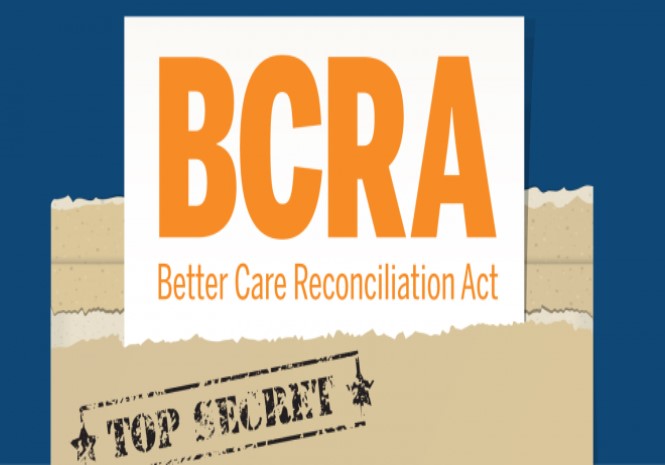Better Care Reconciliation Act, what a mess
Today, Senate Republicans released updated text of the Better Care Reconciliation Act (BRCA) in anticipation of a vote on the motion to proceed next week. If that preliminary vote is successful – and Republicans remain short of the 50 votes necessary – a vote on the BCRA could occur later next week. The Congressional Budget Office is expected to release a score early in the week.
The updated text allows plans that do not comply with the Affordable Care Act (ACA) if issuers “sufficiently” offer ACA-compliant plans. It includes selected Medicaid changes, such as authorizing the inclusion of Medicaid expansion population in block grants at state option and modifications to the Disproportionate Share Hospital (DSH) calculation. It would keep ACA taxes on high earners and health insurer executive compensation above certain thresholds.
Details on the updated BCRA follow:
Ability to Offer ACA Non-Compliant Coverage; Payments for High-Risk Individuals – Beginning on p. 164, the updated text tentatively includes (in brackets) Sen. Ted Cruz (R-TX)’s proposal to allow insurers to offer non-ACA-compliant off-Exchange coverage if they also offer “sufficient minimum coverage” of ACA-compliant Exchange plans beginning in 2020. See a summary here. The ACA provisions from which non-compliant plans are exempt are delineated on p. 167. For example, they would not need to cover essential health benefits and could vary premiums based on preexisting conditions, among a host of other waived ACA provisions in Title I. Non-compliant plans would not be subsidy eligible, are not creditable coverage, and are exempt from ACA risk adjustment; they would be subject to state law.
Read more: MY WIFE, RUINED BY GEORGETOWN LAW CENTER PROFESSOR CHRIS BRUMMER, REVEALS THE DISTURBING TRUTH
Plans would notify the Department of Health and Human Services and state Insurance Commissioner of their intention to offer compliant coverage in a rating area and HHS would certify the availability of at least one gold, silver, and benchmark plan from that issuer. Offering such coverage — as well as non-compliant coverage — would allow the issuer to receive payments from a newly created fund that helps offset the cost of high-risk individuals. Additionally, the section appropriates $2 billion for state oversight of non-compliant plans. The text also gives Treasury the authority to adjust the 58 percent benchmark if no plans would otherwise be offered in a rating area.
- Medicaid Changes – Updates include:
- Disproportionate Share Hospitals (DSH) – In the revised text, the Medicaid DSH calculation is changed from being based on per enrollee in the state plan to being calculated on per uninsured individual. See p. 44 of the updated text.
- Medicaid Home and Community-based Services (HCBS) – Through an added subsection on p. 93, States could apply for a waiver that would enable them to continue providing HCBS under a demonstration program. Priority would be given to low-population density states. Demos would run for four years (Jan. 1, 2020-Dec. 31, 2023), and aggregate federal allotments across all states may not exceed $8 billion over that period.
- Public Health Emergencies – In the event of a declared emergency, the specific part of the state affected would not have its expenditures attributed to per capita caps or block grants for the emergency period.
- Block Grants – Under a broader option for states to elect block grants, states would be able to include the Medicaid expansion population in the block grant at their option. See p. 123 of the updated text.
- Stabilization Fund – Adding to the $112 billion originally specified, the updated text adds $70 billion. State-based efforts can encompass Health Savings Accounts (HSAs) and other state solutions. This is accomplished, as shown on p. 17-18 of the updated text, by boosting the annual CY 2022-2026 amounts to $19.2 billion per year.
- HSAs – The updated text authorizes the use of HSAs to pay for premiums.
- Catastrophic Plans – Like in the House-passed American Health Care Act (AHCA), ACA catastrophic plans would become subsidy eligible beginning in plan year 2019.
- Opioid Funding – The bill adds $45 billion in additional funding for opioid treatment and recovery, as sought by Sens. Rob Portman (R-OH) and Shelley Moore Capito (R-WV). See section 202 on p. 147-148.
- Tax Policy – The updated text keeps the Affordable Care Act’s tax on net investment income, additional Medicare tax for high earners, and remuneration tax on health insurer executive compensation. The prior version of BCRA would have repealed these taxes, as does the House-passed AHCA.






